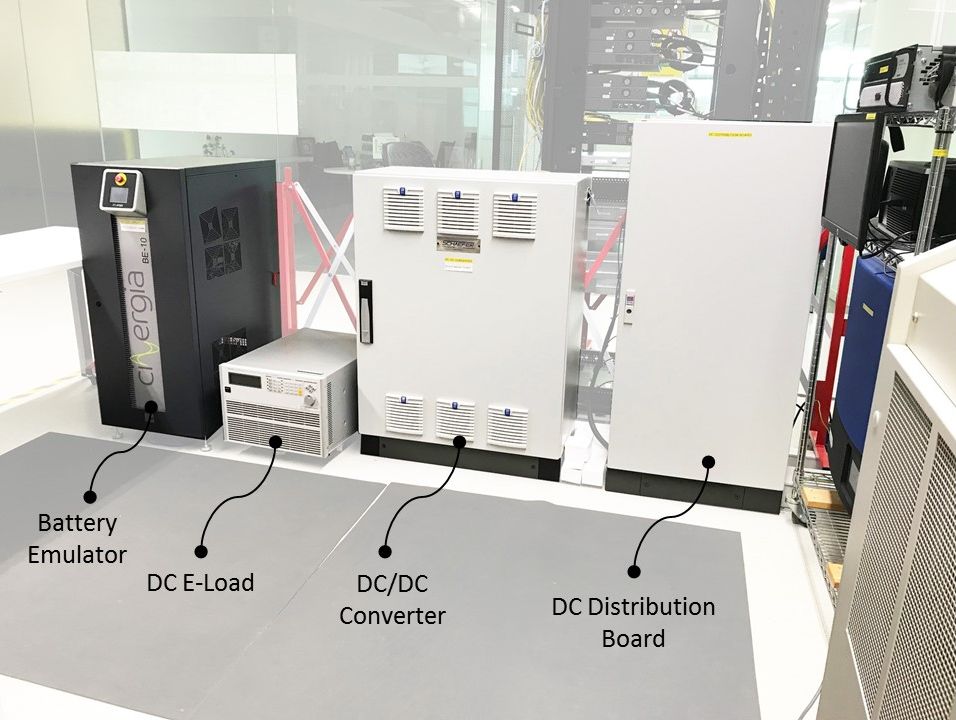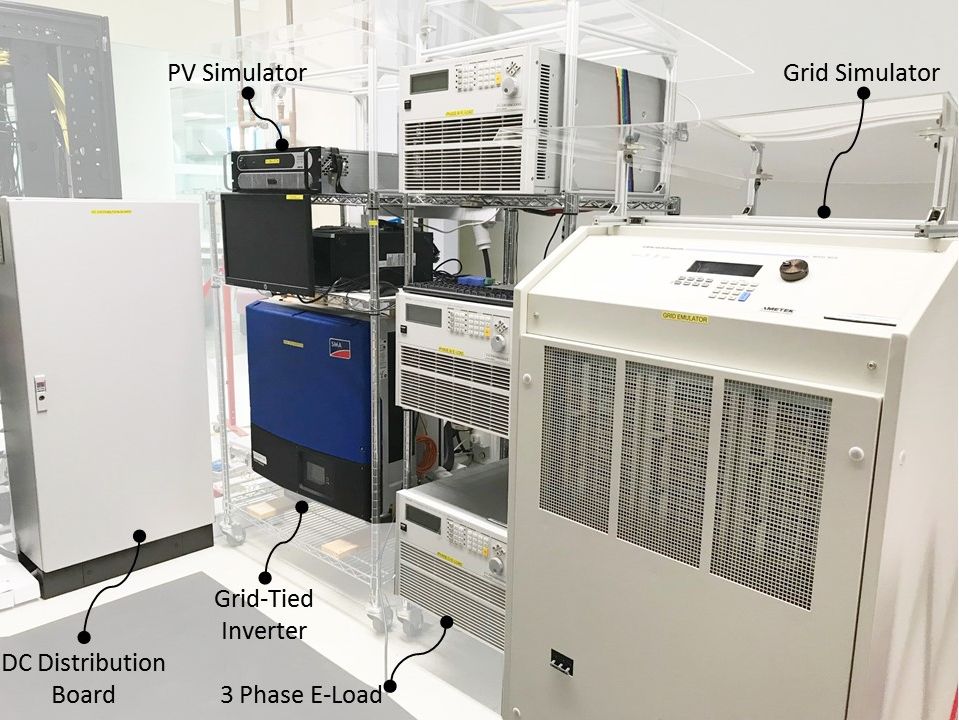Nanogrid System
To emulate a nanogrid, power source (inclusive of both AC and DC), energy storage systems, converters and loads were deployed within the testbed. This includes Alternating Current (AC) power simulator, Photovoltaics (PV) simulator, Battery Emulator (BE), Direct Current/Direct Current (DC/DC) converter, Grid-tied inverter, 3-phase programmable electronic load, and DC programmable electronic load. The mentioned equipment are either connected to DC distribution board or AC distribution board to set up a nanogrid system. AC and DC smart meters are installed in these boards to measure and display the values of voltage, current and power. Hence, the operation and response of individual equipment or the nanogrid can be monitored and controlled either locally or remotely.
The nanogrid can be operated either in island mode or grid-tied mode.
Island mode is helpful for testing a new product of interest. Under such operation, the testing conditions such as a change of power source or power load is controlled locally at equipment side or remotely from Control Room. All data are saved to Plant Information (PI) system.
In grid-tied mode, the power from the nanogrid is feed to the Main Switch Board (MSB) and then supplied to the desired testbed rooms via the respective Distribution Boards (DB). Hence, the overall testbed load can be used as the real load of the research product under testing.
Nanogrid equipment highlights include:
Energy Source
Photovoltaic (PV) Simulator: TerraSAS 600/17 is specifically designed to emulate the dynamic electrical behaviour of a terrestrial PV solar array. They offer low output capacitance and high closed loop bandwidth to match with the advance Maximum Power Point Tracking (MPPT) algorithms used in modern day grid-tied inverters. Once a current-voltage (I-V) curve has been generated, changes to the irradiation level or temperature can be modified on the fly to test the behaviour of a solar inverter under realistic conditions for cloud shadowing and panel temperature rises. With high bandwidth up to 30 kHz, it allows the simulation of high resolution I-V curve in both static and dynamic conditions working in tandem with high speed MPPT. Rated voltage is 600VDC and rated current is 17A.
Power Source Simulator: California Instrument MXi 30 delivers up to 30 kVA in both single or three phase outputs in AC mode. It can be operated as a DC power source. Two highlight functions are:
- Arbitrary-and-harmonic waveform generation: offers user defined voltage waveform and distortion programming
- Automatic crossover between source and sink power mode: offers regenerative capabilities in sink mode that can regenerate up to 100% of the rated output power back to the utility grid.
Energy Storage
Battery Emulator: Cinergia BE10. It is a bi-directional power source in which an Insulated-Gate Bipolar Transistor (IGBT) based switching topology and Digital Signal Processor (DSP) based state-of-the-art digital control are employed to emulate different kinds of battery such as Lead acid, Lithium, Li-ion as well as Redox Flow Vanadium. The efficiency at full load is more than 92%. The rated parameters are: Rated Power 10kVA, 9kW, Rated Output Current 45A (DC), Output Voltage 0-750 VDC
Converter
Grid-tied inverter (DC/AC converter): Sunny Tripower 12000TL is a commercial product of System, Mess and Anlagentechnik (SMA) that is equipped with two separate MPPT at two inputs to work as a multi-string inverter, converting direct current of either one or two PV arrays into alternating current. The rated parameters are: Voltage Input up to 1000 VDC, 3 phase output up to 440 VAC, Maximum Power 12 kVA
Power DC/DC converter: 2 units of Schaefer C4877KZ with power of 10kW offers a setting system at rated voltage up to 800VDC and bipolar voltage output of -190VDC/+190VDC.
Load
Programmable electronic load: a star-connection of 3 units of Chroma 63800 series is available for 3-phase test at 440 VAC and power up to 10.9 kVA, frequency from 45 Hz to 440 Hz. They can be operated independently in AC load or DC load simulation when they are connected in parallel for test of maximum peak voltage of 500V and current of 36A.

